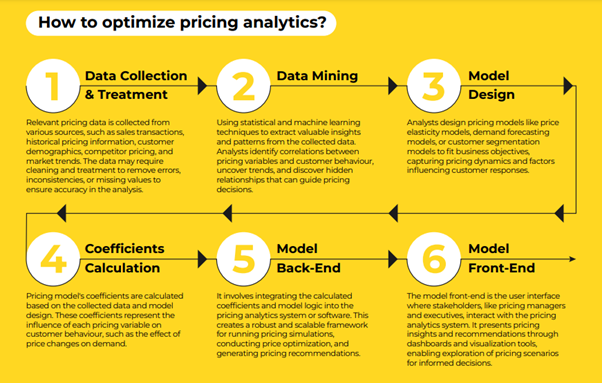When it comes to running a successful business, understanding consumer behavior and the factors that influence it is crucial. One key aspect of consumer behavior is price elasticity of demand, which measures how responsive consumers are to changes in price. In this blog post, we will delve into the concept of price elasticity of demand, its determinants, and its implications for businesses.
Defining Price Elasticity of Demand
Price elasticity of demand is a measure used in economics to determine how sensitive consumer demand is to changes in price. It is calculated by dividing the percentage change in quantity demanded by the percentage change in price. The resulting value indicates the degree of responsiveness to price changes.The interpretation of price elasticity values differs depending on whether the value is elastic, inelastic, or unitary elastic. An elastic demand means that a small change in price leads to a relatively larger change in quantity demanded. In contrast, an inelastic demand indicates that a change in price has little impact on quantity demanded. Unitary elastic demand lies in between, indicating that quantity demanded changes proportionally to changes in price.
Factors Influencing Price Elasticity of Demand
One key factor that determines price elasticity of demand is the availability of substitutes. When there are ample substitutes for a product, consumers have more options and are more likely to be sensitive to price changes. For example, if the price of a certain brand of coffee increases significantly, consumers may switch to a different brand or even choose tea as an alternative.
Product differentiation and brand loyalty also influence price elasticity. In markets where products are highly differentiated and consumers have strong brand loyalty, they are less likely to switch to substitutes, resulting in lower price elasticity. On the other hand, in markets where products are more homogeneous and consumers are less brand loyal, price elasticity tends to be higher.
Income level and necessity vs. luxury
Consumers’ income levels also play a role in determining price elasticity. Generally, goods that are considered necessities, such as basic food items or utilities, tend to have inelastic demand. This is because consumers are willing to spend a larger portion of their income on these items and are less likely to be deterred by price increases. In contrast, luxury goods, which are not essential for survival, typically have more elastic demand as consumers have the flexibility to reduce their consumption in response to price increases.
Moreover, income levels themselves affect price elasticity. Higher-income individuals are often less price-sensitive compared to lower-income individuals. As a result, goods targeted at higher-income segments tend to have less elastic demand compared to those targeted at lower-income segments.
Time horizon
Time horizon is another important factor in price elasticity analysis. Short-run price elasticity refers to the immediate response of demand to a price change, while long-run price elasticity takes into account the time needed for consumers to adjust their habits and preferences.
In the short run, consumers may not have enough time to switch to substitutes or change their purchasing patterns drastically. For example, if the price of gasoline suddenly increases, most consumers may not have an immediate alternative but will eventually adjust their behavior over time. In the long run, as consumers have more time to explore options and make changes, price elasticity tends to be higher.
Implications for Businesses
Understanding the price elasticity of demand enables businesses to optimize their pricing strategies. For products with elastic demand, businesses can consider price skimming strategies, initially setting higher prices and gradually lowering them to capture a wider market. In contrast, for products with inelastic demand, businesses can adopt penetration pricing, setting lower prices initially to gain market share and then gradually increasing them.

Image courtesy of www.polestarllp.com via Google Images
Price discrimination is another strategy that relies heavily on price elasticity analysis. By segmenting their market and applying different prices based on elasticities within each segment, businesses can capture maximum consumer surplus and increase profits. For example, airlines often charge different prices for business class and economy class seats based on the price elasticities of the respective segments.
Response to competition and market changes
Price elasticity of demand is crucial for businesses when responding to changes in competitive dynamics or market conditions. By monitoring price elasticities, businesses can gauge how consumers will respond to changes in their own prices or competitors’ prices.
For example, if a competitor lowers prices, understanding the price elasticities of the market can help businesses predict the likely impact on their own sales and decide whether to match the price decrease or pursue other strategies. Similarly, if market conditions change, such as a downturn in the economy, businesses can use price elasticity analysis to determine the optimal response and mitigate any adverse effects.
Market segmentation and customer targeting
Price elasticity of demand analysis plays a pivotal role in market segmentation and customer targeting. By recognizing that different consumer segments have varying price elasticities, businesses can tailor their pricing strategies and offerings to maximize revenue.
For instance, luxury goods can be priced higher to capture price-insensitive segments, while offering lower-priced alternatives to target price-sensitive segments. This allows businesses to effectively cater to a wide range of consumers and leverage market segments with different price sensitivities to enhance profitability.
Final Words
Understanding the price elasticity of demand is essential for businesses seeking to maximize profits and make informed decisions. By comprehending the factors influencing price elasticity and applying the insights to pricing strategies, response to competition, and market segmentation, businesses can optimize their revenue and adapt to changing market conditions. Continuous analysis and consideration of price elasticity will empower businesses to navigate the dynamic landscape of consumer behavior and achieve sustainable growth.



